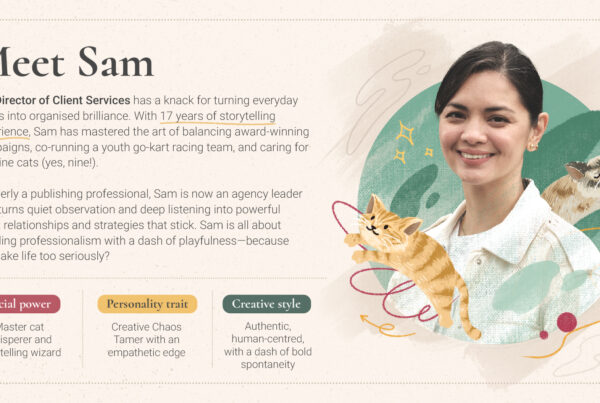Disclaimer: Tech in Asia is a client of ours.
The year is 2013. We’re still one year away from an American marketing consultant’s declaration that the world was in a state of “content shock”. Too much content, too little capacity to consume it.
In Singapore, individual bloggers are quickly dominating their respective industries. The top tech blogs in Singapore, for instance, included lesterchan.net (by Lester Chan), TechieLobang.com (by Joe Teh), and Techgoondu.com (by Alfred Siew). By and large, however, these were seen as hobbies or side projects, and not “serious” businesses.
And then there were the up-and-coming tech publications who believed they could eventually make money from producing content. One of the rising stars was Tech in Asia.
Fast forward to 2018. After eight years of offering their audience of startups, founders, and people in the tech industry free content, Tech in Asia launched their paywall.

The question on everyone’s minds: in a world of free content, how could they possibly compete, and convince readers to exchange cash for content?
It was certainly possible. After putting up their own paywall in 2011, The New York Times recently hit US$800 million in digital revenue within the last four years, boasting over 5 million subscribers.
One year later, Tech in Asia proudly reported that they had just posted their first profitable year ever. And we thought that the story of how they pulled it off is instructive for content marketers who need to “sell” their content to potential customers as well.

In this exclusive interview, we talk to Tech in Asia’s chief correspondent (and former chief editor) Terence Lee to find out how they managed to convince over 3,500 readers – accounting for roughly S$1.17 million in annual recurring revenue – to pay for their content.
The path to building the paywall
Since Terence joined the company in 2013, Tech in Asia’s audience has remained the same. Their mission hasn’t changed, either: “to build and serve the technology and ecosystem by bridging the information and connection gap.”
In the early days, the editorial team’s goal was mainly to “chase after page views,” recalls Terence. That meant that quantity was the all-important factor, since this was the most efficient way to get more eyeballs.
“There was little incentive to pursue deeper articles, [and those] that drive a lot of page views aren’t necessarily the most important ones,” he explains. “That was the challenge with the initial strategy.”

Still, Tech in Asia quickly gained wide readership across the region, and became a household name in the tech industry. Most of their traffic was organic, and came from Facebook and Google. Everything was going as planned.
But things started going downhill from there. Despite raising a substantial amount of funding and going through world-renowned startup accelerator program YCombinator, the company went through a rough patch in 2017 and 2018. Several projects went sideways, leading to multiple layoffs.
It was then that they decided to launch a paywall to monetize their content. The team realized that, in order to “be better at serving Asia’s tech ecosystem,” they required “more resources and a consistent income stream.”
In other words, the subscription model was Tech in Asia’s bid to make the business self-sustaining.
Quality content markets itself
Understandably, there was a lot of scepticism surrounding this move. Even Terence had his doubts. Tech in Asia needed to prove that its content was worth paying for right away.

This meant that their content strategy had to change drastically. No longer was the goal to reach as many readers as possible, says Terence, but to produce in-depth articles that paid subscribers would expect.
According to Terence, the shift to focusing on quality over quantity was all that was necessary to convince readers to put their money down for a subscription.
“The content pretty much markets itself,” he explains. “You write good content, you put it behind a paywall, people would naturally want to subscribe because they want to read your content, so that’s how we approach it.”
Defining quality content
So what does quality content look like for Terence and the Tech in Asia team?
Firstly, the article needs to add value.
“Are we publishing something that hasn’t been published elsewhere? Are we adding value to the discussion?” Terence explains. For instance, if they were to publish something related to the recent hot topic of the COVID-19, Terence would consider if the article adds anything to the debate, or “is this just repeating what someone else has written?”
“So I think exclusivity, having some uniqueness, some insight, adds value to the content,” he says.
Secondly, the stories need to be significant. In other words, readers need to actually “care about these stories,” explains Terence, adding that:
“If you are writing about something that no one cares about, then obviously it’s not valuable.”
He is aware that every story probably has someone somewhere who cares about it. However, the team has limited time, “so it’s about finding the story that makes the biggest impact.”
For example, big companies.

“People care about the bigger companies, so the bigger the companies you write about, the more people will care about your article,” explains Terence. These companies tend to have more money and hire more, he adds, so anything that happens to them will have an impact on a lot of people.
Mini case study: the Honestbee saga
One of the most successful examples of these principles in action was Terence’s coverage of Honestbee, which became “one of the biggest talking points in Southeast Asia’s startup scene,” he recalls.

It started when he received a message on Facebook from a source one Saturday morning:
“Honestbee has ceased operations in the Philippines. Did you hear anything?”
Initially, Terence had planned to take the direct approach and simply write “a story about how it closed shop in the Philippines.”
“And given how Honestbee’s closure was spilling out on social media, I had to step on the gas pedal lest some other publication outscoops me,” he explains.
After reaching out to as many Honestbee employees as possible on LinkedIn, he finally got a key source to agree to talk on Sunday morning. And Terence ended up getting far more than what he bargained for:
“The source spilled the beans on so much more: Honestbee had been seeing layoffs and resignations. After speaking to multiple sources and reaching out to the startup for comment, that became my story.”
According to Terence, here’s why the story ended up going viral:
- Honestbee was “a well-loved brand”
- They had “well-known investors and a fairly large team”
- The conflict had been “bubbling under for some time”
- Bad news sells (unfortunately)
Yet, there was a learning point for him here. After the success of the initial article, Terence didn’t press his advantage and follow up with more Honestbee-related stories, allowing TechCrunch to slip in and take the lead.
“That was a lesson for me. If a story is capturing a lot of interest, and if it’s not been fully told, then I should continue working on it,” he says. “So I went back on the Honestbee trail, producing short and longer follow-up articles that continued to turn readers into subscribers.”
Terence also discovered that he had missed certain “red flags” about Honestbee – such as Glassdoor reviews and a not-so-successful partnership with NTUC – that would have helped him get the story out even earlier.
“Knowledge about startups, tech, or finances will help in spotting oddities,” he says. “That’s why we need to educate ourselves, and lean on knowledgeable sources to educate us.”
A final learning point he gleaned from this episode was that journalists or content creators need to build up their “branding” by producing quality content consistently:
“The more you write about a topic, company, or type of story, the more people will associate you with it and feed you more story leads related to it.”
Or, as Terence sums it up: “stories beget more stories.”
Levelling up
Needless to say, Terence’s team of writers had some adjusting to do. Now, they required an even deeper understanding of the industry, as well as advanced journalistic skills, says Terence, and this meant putting in place stricter processes and training.
Firstly, while their processes were more “casual” previously, writers now had to meet a quota of 1 article per week.
“It doesn’t sound like a lot, but the articles that our premium journalists churn out require a lot more work, that’s why we set it at about one a week,” Terence explains.

Secondly, more emphasis was put into identifying the areas that writers needed to work on, and focusing their training there.
One of these areas, for instance, was “how to pitch stories, how to craft a good story idea,” reveals Terence. As such, he created an internal document which fleshed out what the different components of a good story idea are. These include:
- Location (“what’s the local angle?”)
- Conflict (“is there a conflict of values and motivations [or] shady dealings?”)
- Timeliness (“strike while the iron’s hot!”)
Terence also began to host weekly one-to-one mentoring sessions with writers. At the same time, new editor-in-chief Jonathan Burgos also runs weekly meetups with the team to enforce certain things.
“That’s a good opportunity for the editor-in-chief to say, hey, these are certain things to watch out for,” Terence explains. “The difference now is constant reinforcement and trying to find ways to do that.”
In a team of eight writers, three were assigned to breaking news, while the rest focused on developing paid content. Eventually, these three writers will also “progress […] and transition into doing paid content.”
Case studies illustrating how these guidelines come into play are also in the works as part of training materials for the team, he adds.
Filling in the gaps, one writer at a time
Within a month, Tech in Asia hit their annual target for paid subscribers. And by the time 2020 came around, they had more than 3,500 subscribers and were profitable for the first time in ten years.
At their current pricing of US$59 (S$84) per quarter, that means Tech in Asia’s subscription business is bringing in more than US$69,000 (S$98,000) per month, or US$828,000 (S$1.17 million) in annual recurring revenue.
While this achievement certainly validated their choice to focus on subscriptions, Terence is not content to rest on his laurels.
Or to be more accurate: he can’t.

What Terence and the team have come to realize is that paying subscribers have far higher expectations. “They expect more because they are paying for a product,” he explains. “The challenge now is to constantly ensure that our subscribers are happy with our content.”
Indeed, the team has had their hands full dealing with complaints from both paying and non-paying readers alike. The latter, for instance, often ask why paywalled content is being shared on Facebook when “they click in but cannot access it,” shares Terence, who admits that it is a valid concern that the team is considering.
In general, he distils the essence of all the complaints to this:
“People just want to see good content that’s relevant to them.”
However, it is “hard to meet everyone’s expectations on that […] there’s always going to be a gap,” Terence adds.
Still, he is hopeful that as they “grow the newsroom and hire more writers, we will be able to fill more of the gaps.”
“Looking at our content now versus a year ago, it has certainly improved. But there’s definitely a long way to go,” Terence says.
Data-driven content experiments
These days, the team is constantly digging into the data to see how to make that improvement. One of the things that they look out for is “which articles drive the most engagement, the most subscriptions.”
The initial coverage of Honestbee’s fall from grace, for instance, drove many subscriptions. Subsequently, the team doubled down and kept doing related stories, all of which continued to earn subscribers for them.
Terence is also constantly “trying something new and seeing how readers react to it.” In other words, conducting content experiments.
“A good example of this would be the listicles and TIA bot articles,” he explains. “We did a couple of series which listed the most funded startups and hottest tech events, both of which worked out well for us and have driven subscriptions since.”

While page views are still important, Terence reveals that they are not “directly linked to revenue made.” As such, they are not the key metric that the team focuses on, though they keep an eye to ensure that “traffic doesn’t fall too drastically.”
Long live the email newsletter
To be sure, Tech in Asia’s traffic has been slowly declining since the paywall was launched, for obvious reasons. Instead, Terence says that they are tracking newsletter subscriptions a lot more.
Why so? According to him, most of their paid subscribers come from email. As such, the marketing team focuses most of their efforts on driving people to sign up on the newsletters, which have gone through a revamp as well.
For instance, the team sends out a weekly editor’s email to both subscribers and non-subscribers alike, with the goal of allowing the editor to share what’s happening behind-the-scenes in the newsroom, as well as the top stories last week.

“We also have a weekly commentary that we send out over email, and readers will have to click through to be able to read the full story,” Terence adds. “And we make our newsletters more personal. Every day we get one of our colleagues to write a short personalized note which we send out to all subscribers to make the newsletter even more engaging.”
Currently, they have around 200,000 email subscribers.
An ambitious goal
When asked about their goals going forward, Terence made no attempt to mince his words: they want everyone in the tech industry to subscribe to Tech in Asia “in some fashion.”
“We obviously are very ambitious. I don’t think we will ever hit our goals,” he concedes with a laugh. “Our goal is just to get as many subscribers as possible, and find ways to give them enough value to pay.”
In a nutshell: more subscribers, more types of content, and more experiments.
I can’t wait to see what Tech in Asia has in store next. What about you?
—
200+ industry-leading tech companies in Southeast Asia are happy clients of With Content. Join them and start delivering valuable content to your potential customers today.



